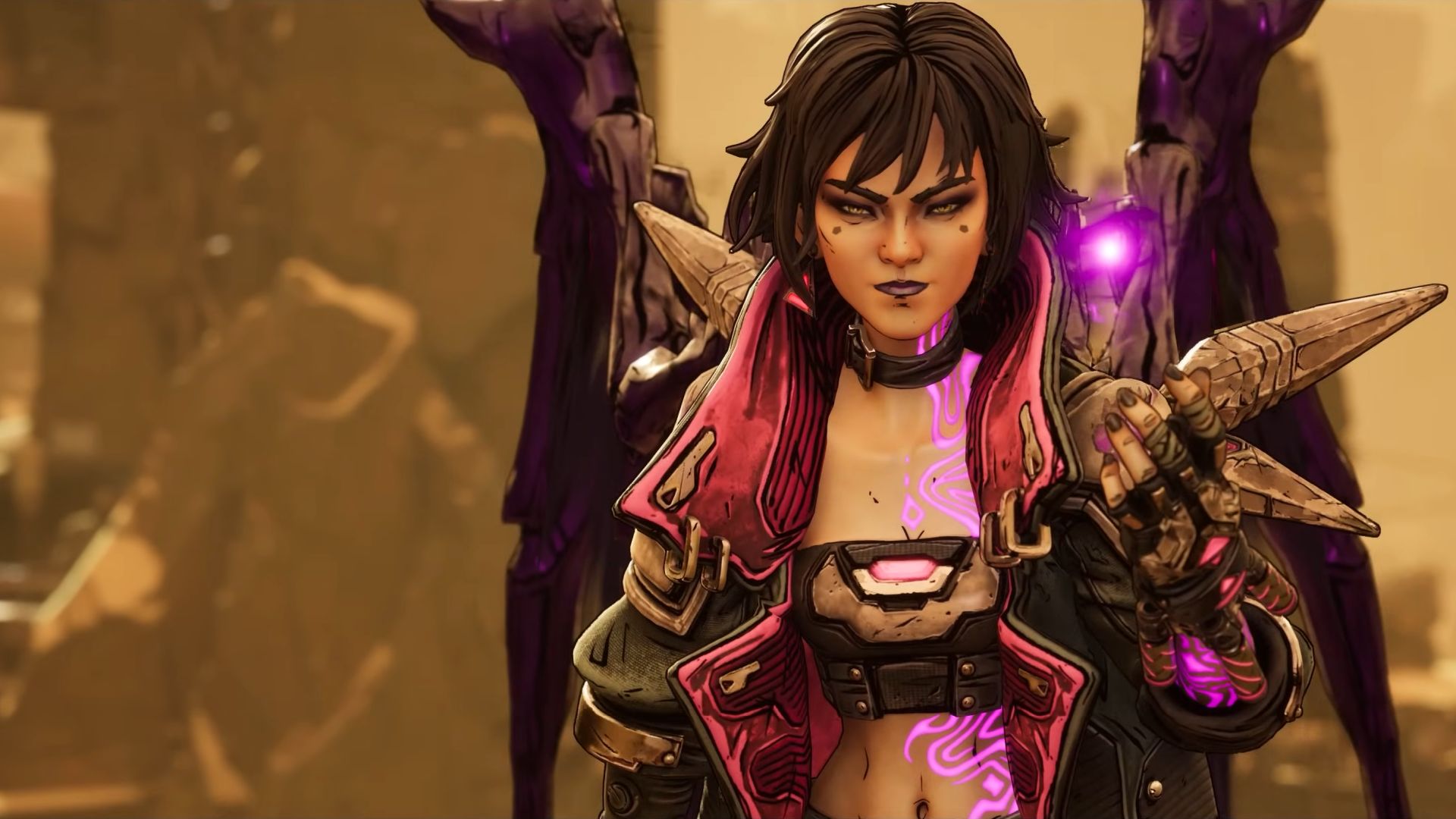
The Nintendo Switch has a performance problem.
This isn’t news for Switch fans (or haters). The limitations of its humble Nvidia Tegra X1 chip were visible in early exclusives like Xenoblade Chronicles 2, which ran at 720p docked yet sometimes dipped below 30 frames per second. Still, the issues were rarely distracting.
But today, six years after the Switch’s release, the cracks visible at launch have widened into gaping fissures—sometimes, literally.
IGN’s Rebekah Valentine saw this first-hand while reviewing Pokémon Scarlet and Violet. “These games run like garbage,” she says. “There are also tons of bizarre clipping issues where Pokémon can get caught in walls or underground, or the camera gets stuck at an odd angle and show an empty void on half the screen.”
The issues are too numerous to detail here (read her review for the full scoop), but easy to summarize. They’re bad. So bad they sour what should be a refreshing open-world spin on Game Freak’s usual Pokémon formula.
It’s Not Just Pokémon
Pokémon Scarlet and Violet are singularly terrible examples of how modern Switch games perform, but they’re not the only games that struggle.
Bayonetta 3 ambitiously targets 60 FPS but falls short, with many detours to 45 FPS and below. The Switch port of Sonic Frontiers is drastically scaled back, running at or slightly below 30 FPS and suffering major object pop-in besides. Some publishers, such as Square Enix, have given up on “real” Switch ports of graphically demanding games like Kingdom Hearts III, instead releasing cloud versions that stream the game from a remote server.
It’s not all bad news. Splatoon 3 achieves a stable 60 frames per second in gameplay (though the city sections are 30 FPS) and Xenoblade Chronicles 3 runs at a much more stable 30 FPS than its predecessor.
Yet these improvements are small comfort to Switch fans hoping for ports of Elden Ring or Call of Duty: Modern Warfare 2. These games, along with many others released on the PlayStation 5 and Xbox Series X, are unlikely to ever see a Switch release. The gap between the Switch’s capabilities, and that of its competitors, is too wide for most developers to bridge.
It’s a problem, but not a surprise. The Nintendo Switch is six years old. The Nvidia Tegra X1 chip that powers it is even older: it was first released in 2015, meaning it was already a bit out of date when Nintendo released the Switch. A 2019 chip revision improved efficiency, boosting the battery life of new Switch consoles, but performance was unchanged.
The Switch’s lackluster performance might be a contributor to slowing sales. Though a hit for Nintendo with over 114 million consoles sold so far, Switch sales have lost steam in the past year and the PlayStation 5 has outpaced the Switch in recent months (in the United States, at least). Nintendo blames this on production, not demand—but that explanation feels incomplete with Switch consoles routinely in-stock at major retailers.
What would a Switch Pro do for you, really?
Declining sales of Switch hardware contrasts with its continuing dominance in software. Pokémon Scarlet and Violet sold 10 million copies in their first few days. According to NPD’s latest October report, six out of the 20 best-selling games in the U.S. were Switch exclusives (another, NieR: Automata, landed its spot because of a new Switch release).
Gamers want to play Switch exclusives. We’d just prefer to do it on better hardware. So, what might a Switch Pro deliver?
The most obvious improvements would be in resolution and framerate. First, the bad news: a Switch Pro will struggle to handle 4K at 30 FPS, never mind 60 FPS. Yet the current Switch is so far behind the curve that more meager improvements will seem impressive. The most ambitious Switch games are running at 720p to 900p resolution in docked mode and, despite that, many also stick to 30 FPS. A consistent 1080p at 60 FPS would feel like a win.
A Switch Pro could also support technology the current model doesn’t, such as HDR and Adaptive Sync. The latter could be especially useful if implemented well. Adaptive Sync would smooth out minor detours below a 60 FPS, making such dips imperceptible to players.
And don’t forget machine learning. Nvidia DLSS 2 uses neural rendering to upscale games with incredible results. Nvidia DLSS 3 can even insert new, AI-generated frames. DLSS 3’s performance mode can use AI to generate up to seven out of every eight pixels visible in a 4K image which, in a best-case scenario, can improve performance by up to 5x over native rendering. It’s a great fit for a power-constrained device like a new Nintendo Switch…in theory, at least.
The miracle chip doesn’t exist. Yet.
Gamers want an upgrade and Nintendo needs to boost sagging hardware sales. Surely, a Switch Pro is on the cusp of announcement. Right?
Maybe not.
Switch fans are all too familiar with hopeful rumors. The Switch Pro was about to arrive in 2019, then 2020, then 2021. These rumors were put to rest by the Nintendo Switch OLED, which arrived last year with a gorgeous new screen and the same old silicon.
I wasn’t surprised by this move for a simple reason: it was never clear what, exactly, would power the so-called Switch Pro. The Switch’s unique hybrid design binds it to a much lower power target than the hardware in competing consoles, which means the designs found in other consoles, as well as gaming laptops, won’t work for the Switch.
The situation is complicated by Nvidia’s decision to shift gears on Tegra. It originally launched to compete in consumer devices with ARM market leaders like Qualcomm (the first Tegra-powered product was the Microsoft Zune HD), but it stalled. So, Nvidia switched tactics. The lineage is now referenced by names like Xavier and Orin and focuses on automotive, industrial, and robotics with an emphasis on machine learning. These new chips, which target a broader range of power consumption and offer significant I/O connectivity, are a less obvious fit for a portable game console.
That’s not to say it can’t happen. The least powerful Nvidia Jetson Nano and Jetson Orin Nano chips target a thermal design power from 5 to 15 watts, which is suitable for the Switch. The most recent Switch Pro rumors lean on a customized chip, codenamed T239 (the “T” is for Tegra) based off Nvidia’s Orin. This feels plausible: the cost, die size, and power draw of the chip all look on-target. A variant of Orin Nano could probably handle 1080p at 60 FPS, albeit in more graphically modest games. It also has the potential to add features Nintendo fans crave including HDR, adaptive sync, DLSS, and ray tracing.
Custom chips take time, however—and the more customization needed, the more time required. If the rumors surrounding the T239 prove true, Nintendo and Nvidia started work on it around mid-2021 (the first reference to it appeared on Twitter in June of last year). But these leaks only involve APIs and Linux kernel updates, which is less convincing than prototype hardware, leaked plans for chip production, or die shots.
Nintendo’s president Shuntaro Furukawa has also gone on record saying there will be no new hardware in the company’s current fiscal year, which continues until April of 2023. It’s possible that Nintendo and Nvidia are keeping secrets and will surprise launch a Switch Pro in summer of 2023, but that would be an aggressive timeline for a Switch sequel that’s not yet officially announced, or even hinted. Belief in such miracles requires an unhealthy dose of hopium.
So, buckle up, Nintendo fans: it looks like we have at least another year of questionable Switch performance to struggle through.






